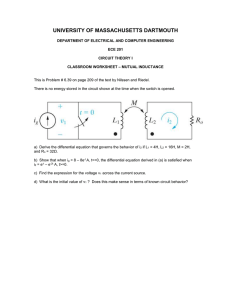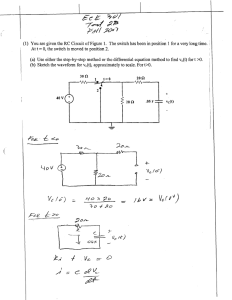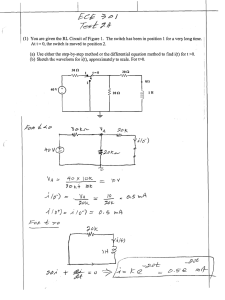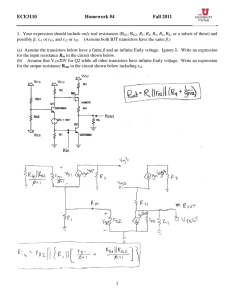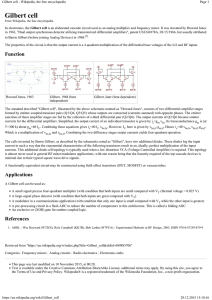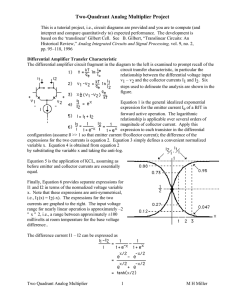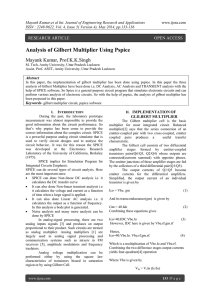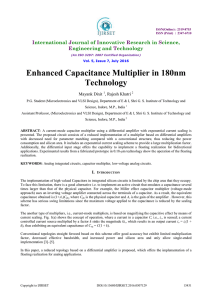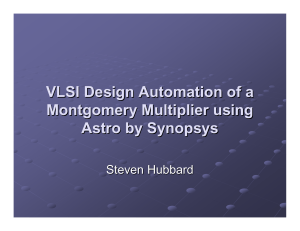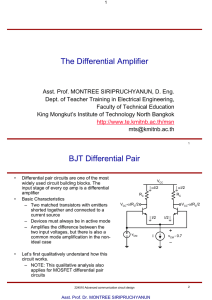ENEE312H Spring 2002 Homework 9
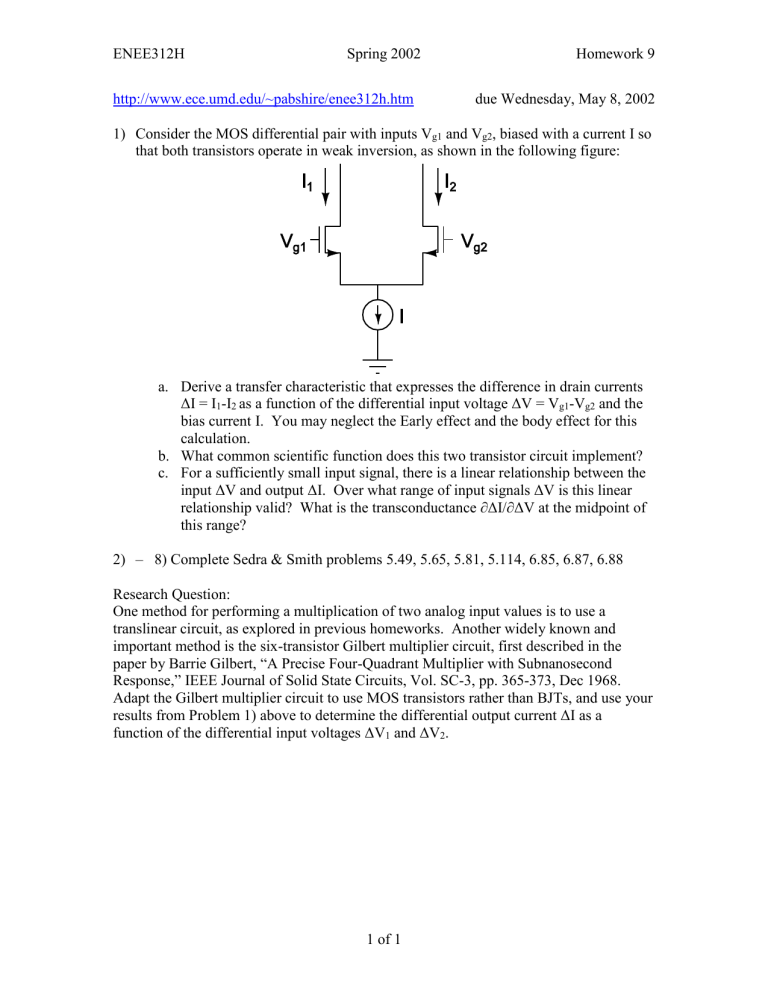
ENEE312H Spring 2002 Homework 9 http://www.ece.umd.edu/~pabshire/enee312h.htm
due Wednesday, May 8, 2002
1) Consider the MOS differential pair with inputs V g1
and V g2
, biased with a current I so that both transistors operate in weak inversion, as shown in the following figure: a.
Derive a transfer characteristic that expresses the difference in drain currents
ΔI = I
1
-I
2 as a function of the differential input voltage ΔV = V g1
-V g2
and the bias current I. You may neglect the Early effect and the body effect for this calculation. b.
What common scientific function does this two transistor circuit implement? c.
For a sufficiently small input signal, there is a linear relationship between the input ΔV and output ΔI. Over what range of input signals ΔV is this linear relationship valid? What is the transconductance ∂ΔI/∂ΔV at the midpoint of this range?
2)
– 8) Complete Sedra & Smith problems 5.49, 5.65, 5.81, 5.114, 6.85, 6.87, 6.88
Research Question:
One method for performing a multiplication of two analog input values is to use a translinear circuit, as explored in previous homeworks. Another widely known and important method is the six-transistor Gilbert multiplier circuit, first described in the paper by Barrie Gilbert, “A Precise Four-Quadrant Multiplier with Subnanosecond
Response,” IEEE Journal of Solid State Circuits, Vol. SC-3, pp. 365-373, Dec 1968.
Adapt the Gilbert multiplier circuit to use MOS transistors rather than BJTs, and use your results from Problem 1) above to determine the differential output current ΔI as a function of the differential input voltages ΔV
1
and ΔV
2
.
1 of 1
